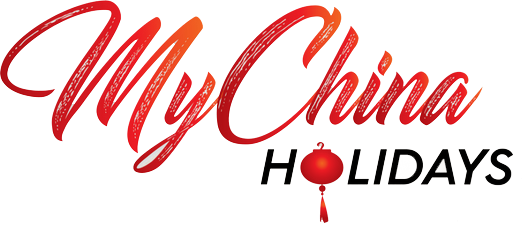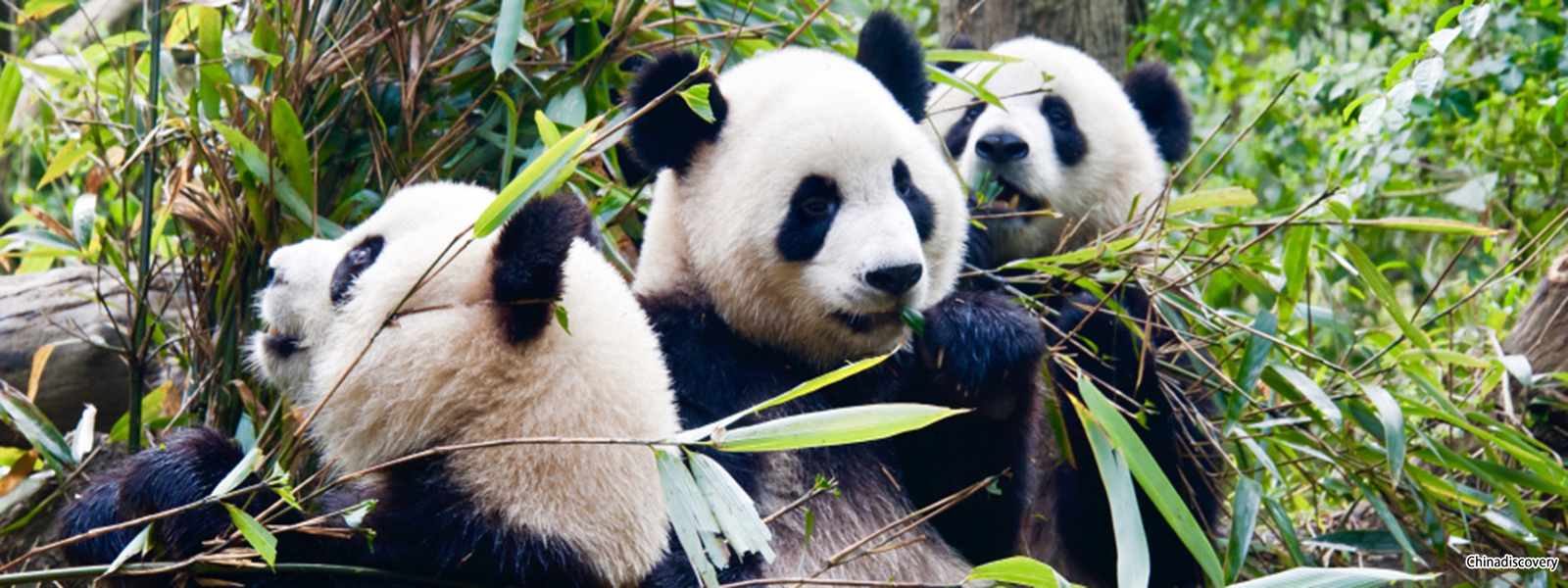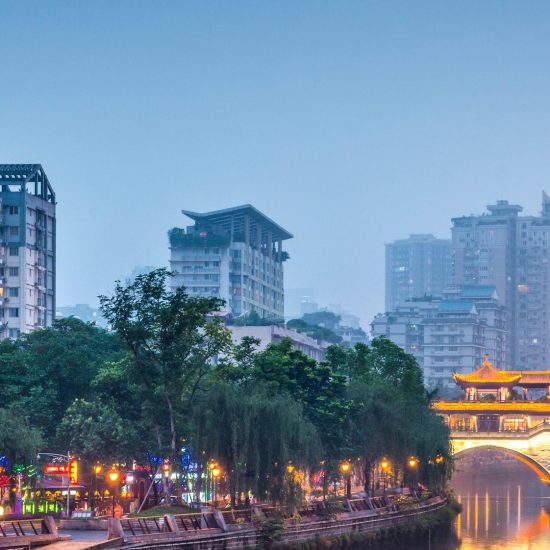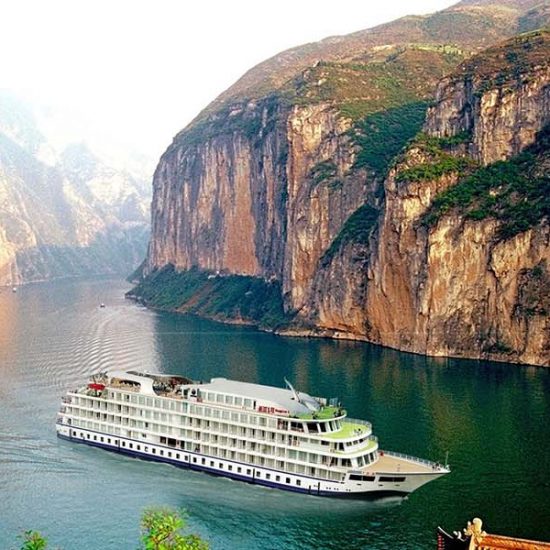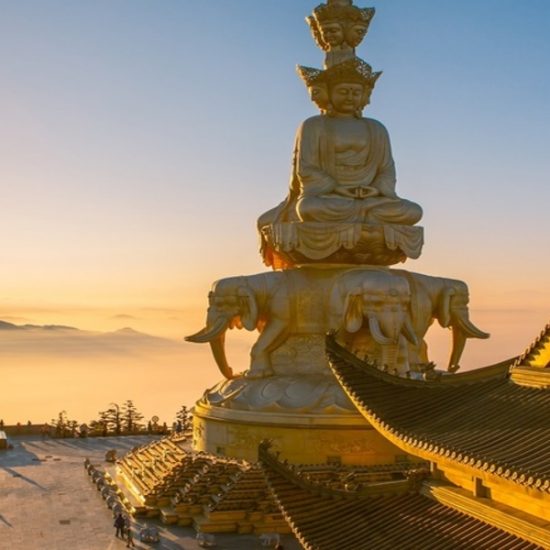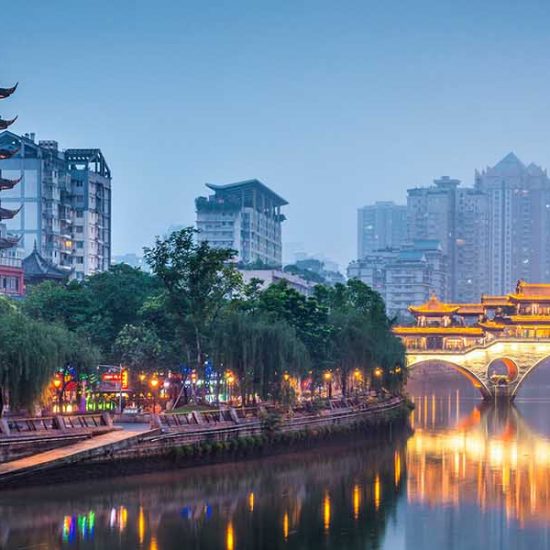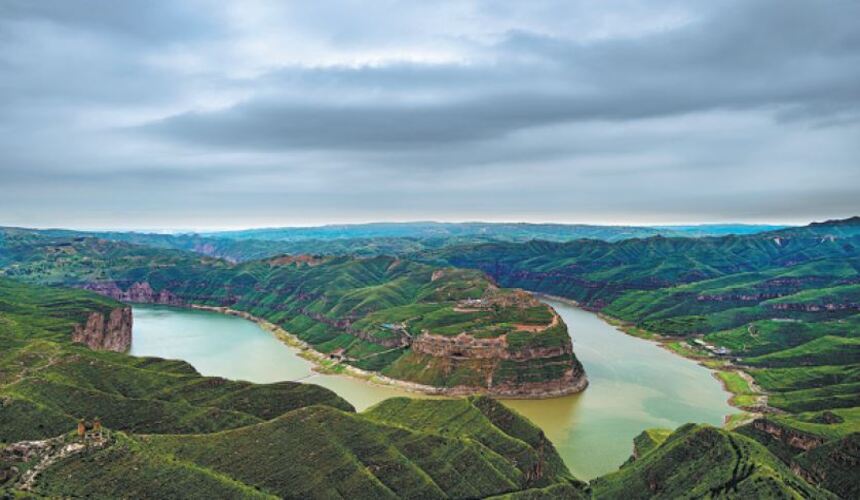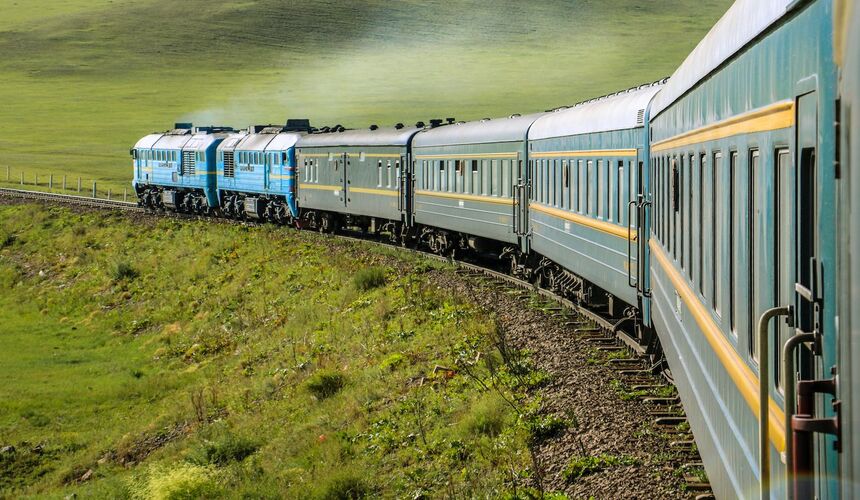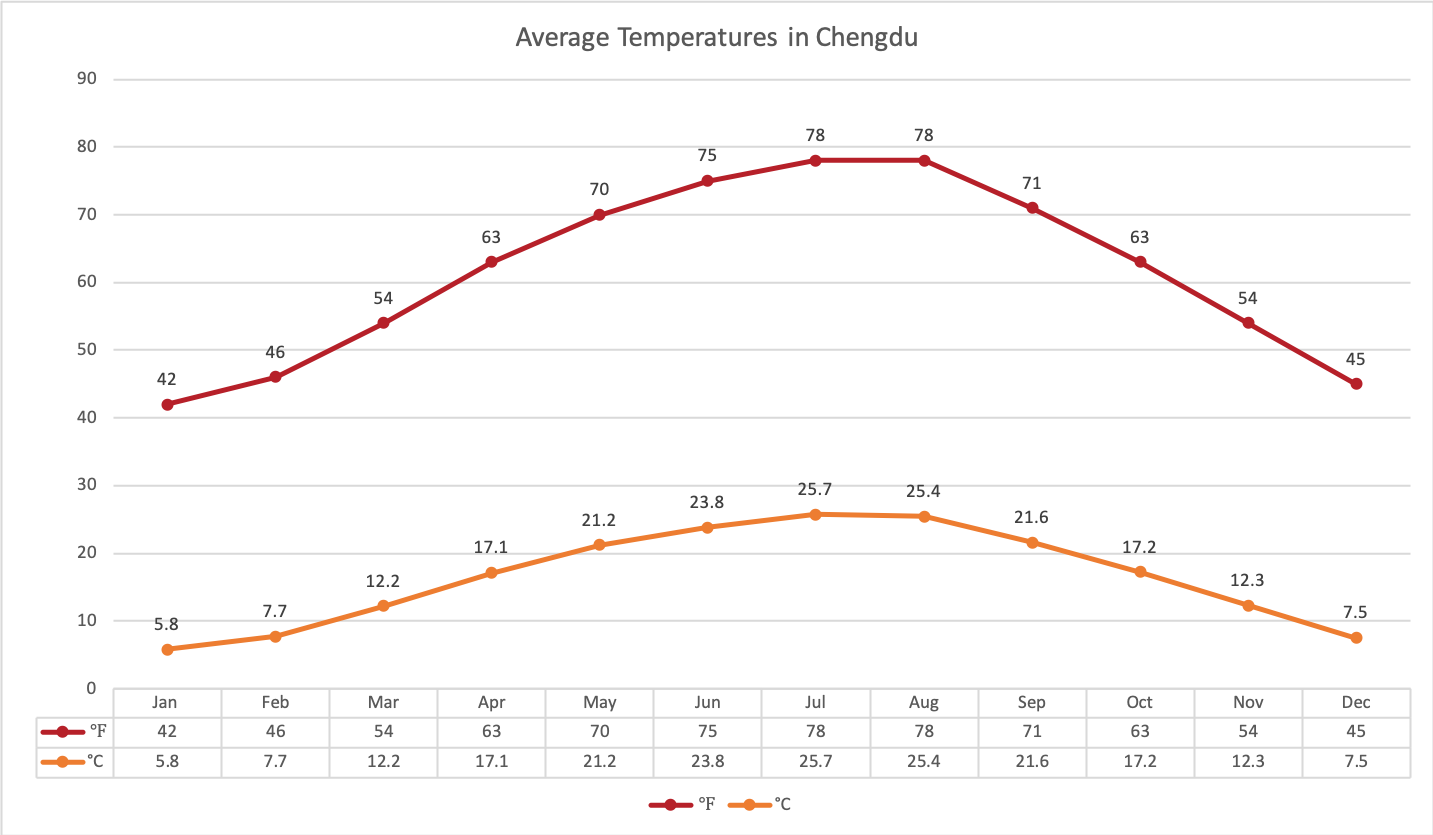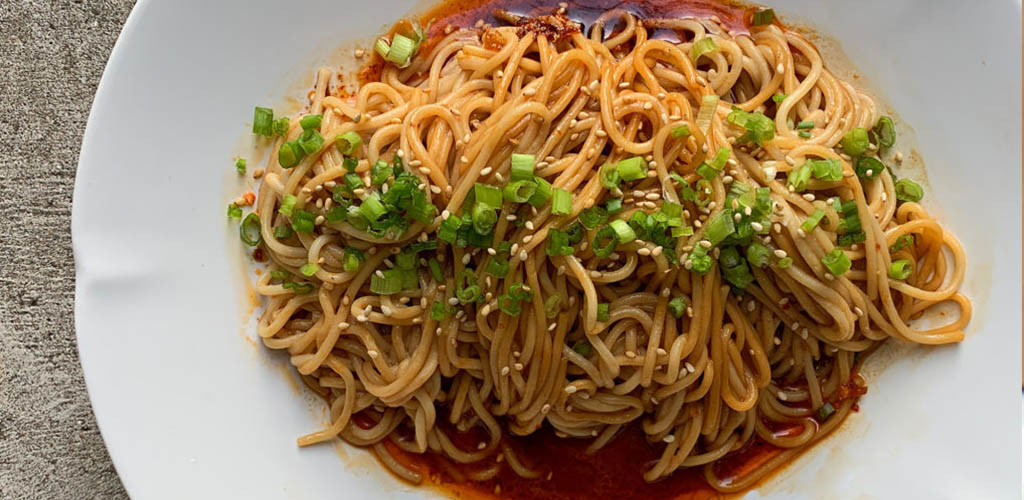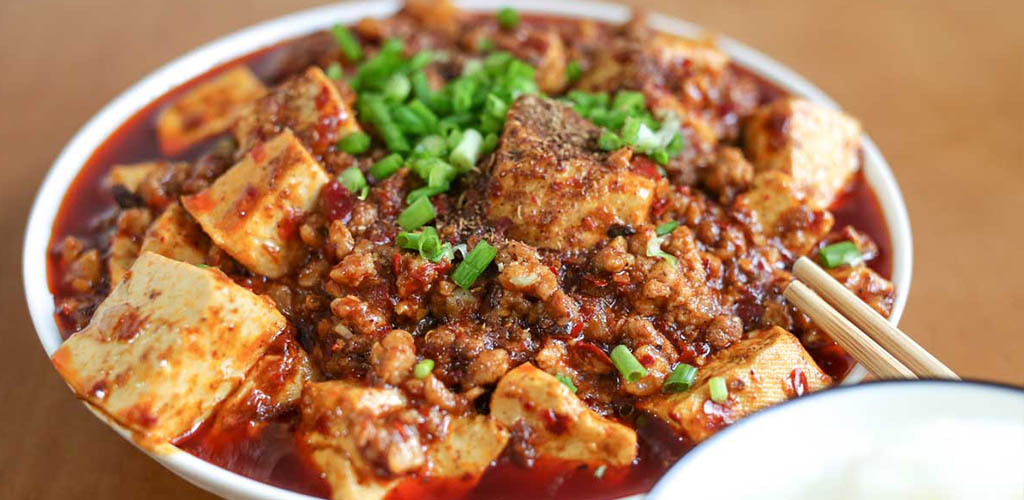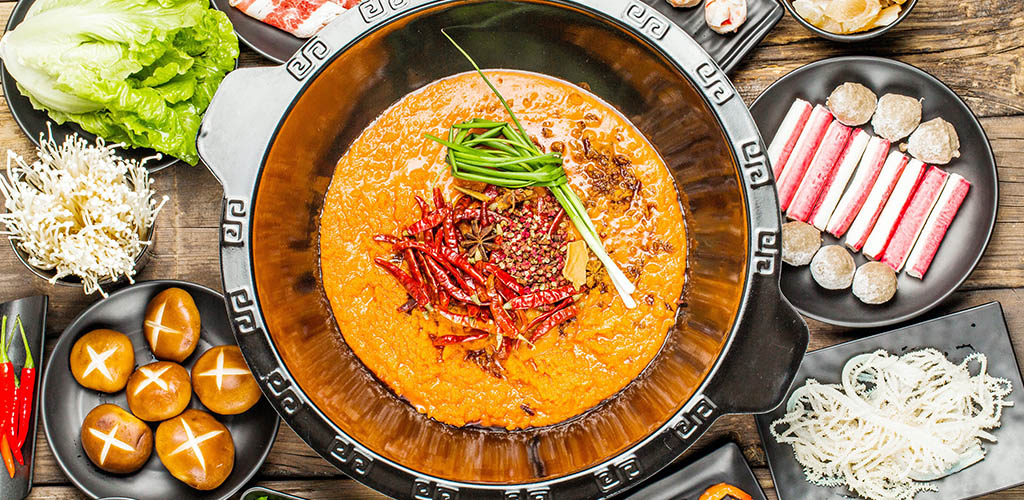The mainland of giant pandas
Lose your breath among the awe-inspiring plains, hills, rocky mountains and plateaus in Chengdu. It is the kingdom for rare animals and plant species, whereas the giant cuddly pandas tops as the most precious and priceless. You can enjoy beautiful national parks, admire the national heritage sites, get close to shy fluffy pandas, discover mysterious lands, and visit authentic villages to taste their spicy cuisine and more magical places, once you step into this beautiful countryside.
The weather in Chengdu is mild, humid, and rainy. Spring and autumn are the ideal times of year to visit Chengdu because of the pleasant weather and the livelier pandas compared to summer. The spring season in Chengdu lasts from March until May. These are warm months in terms of temperature. Chengdu’s average temperature is 12°C (54°F) in March, 17°C (63°F) in April, and 21°C (70°F) in May. Autumn in Chengdu is from October to November. The weather in autumn is similar to the weather in spring but you should have a warm coat with you in case the weather changes quickly. Is the most popular season to visit Chengdu. Summer in Chengdu is really hot and humid. Rainy days occur for almost half of the month. The temperature is often hot throughout the day, at 35°C (95°F), but it is sultry in the early morning and evening. Winter in Chengdu is cold as it has the least amount of days of sunshine. The average temperature in winter from November to mid-February is about 5°C (41°F).
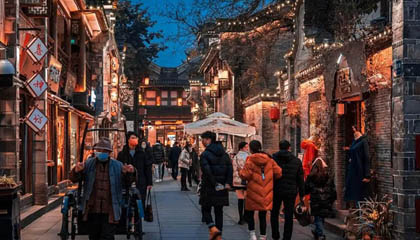
Jinli Ancient Street
During the Qin, West Han, and Three Kingdoms eras in China, this route gained immense recognition as one of the busiest commercial avenues. It is roughly 350 meters long, has flagstone pavement, and is dotted with artwork, regional cuisine, tea shops decorated in the traditional Chinese style, opera stages, and taprooms. For those who have never visited Chengdu or who wish to experience a taste of the local way of life, Jinli Street is definitely an excellent place to go.
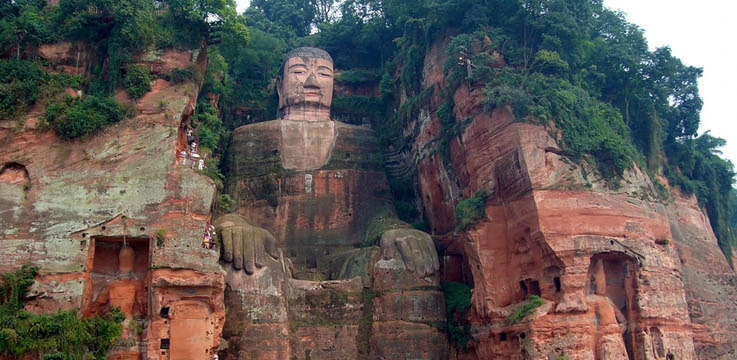
Leshan Giant Buddha
As the largest cliff stone statue in China, Leshan Giant Buddha initially represented the people's simple wish to calm down the water. For thousands of years, Leshan Giant Buddha has guarded the landscape at the confluence of the three rivers. The site and the statue were listed as UNESCO World Heritage Site together with Mount Emei in 1996. Leshan Giant Buddha Scenic Area not only owns the famous Buddha but also various temples, gardens, towers and much more. There are two ways to admire the Giant Buddha. You can either climb the Giant Buddha or take a leisure boat tour to see the panoramic view of the Buddha.
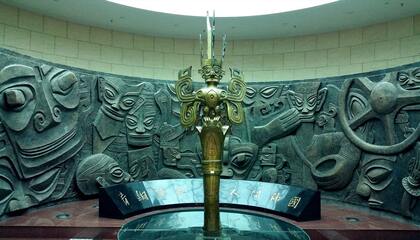
Sanxingdui Museum
Numerous magnificent pieces of stone, gold, jade, bronze, and other materials, all unique in shape and found nowhere else in the world save in this museum. These recovered artifacts accurately depict both the prehistoric faiths and a bright period in ancient Shu history. This archeological museum featured Bronze Age civilization about 3000 years to 5000 years ago. The famous discoveries include the huge bronze mask, the big bronze tree, and some gold masks.
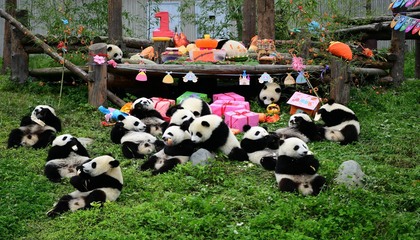
Chengdu Research Base of Giant Panda Breeding
This panda park, located 18 km north of the city centre, is one of Chengdu's most well-liked sights and the simplest place to catch a peek at Sichuan's most famous citizens. The base, which is home to roughly 120 giant and 76 red pandas, focuses on encouraging the breeding of these infamously solitary animals and has had remarkable success in doing so. The ``falling in love period`` lasts from March to May. You might witness small infants in the nursery incubators if you visit in the summer or autumn.
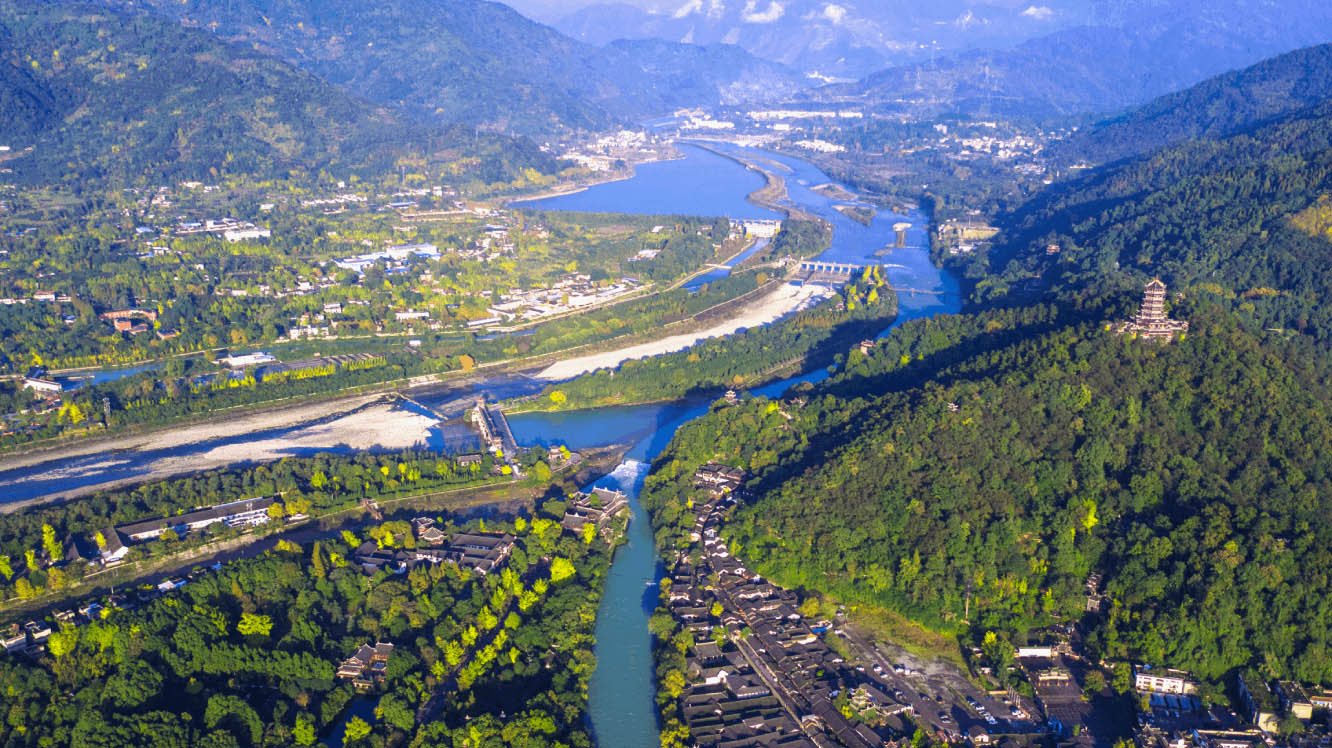
Dujiangyan Irritation System
If you are interested in the irrigation system on the River then this is a place you can visit. We recommend you to take a cruise in Chongqing, Sichuan so that you can enjoy the view of the Yangtze River as well.
Food from Chengdu is renowned for being exceptionally spicy; unless you’ve tried Sichuan food, you haven’t had spicy food. The special taste of Sichuan cuisine is how that liquid magma dances around with the other six flavours: sweet, sour, bitter, pungent, aromatic and salty. Doubanjiang (fermented bean paste), chilli oil, and Sichuan peppercorns (mala) are the essential ingredients of a delicious dish from Chengdu. Add some rice wine vinegar, soy sauce, ginger, garlic, and extra pepper to temper the spiciness and round off the flavour profile. The most distinct ingredient is the Sichuan peppercorns or mala in Chinese.
Must-try: Sichuan Hotpot, Mapo Doufu, Dan Dan Noodle, Chuanchuanxiang, Fuqi Feipain, San Zi Douhua, Tangyuan
Air
There are two airports in Chengdu. Tianfu International Airport (TFU) is situated approximately 50 kilometers (31 miles) to the southeast of the city center, whereas Shuangliu International Airport (CTU) is located in the southwest of the city, approximately 16 kilometers (10 miles) from the city center. Be aware of which airport you are going to land in or depart from to avoid any trouble. There are regular one-hour flights to Kunming, the provincial capital of Yunnan. Travel time to Xining, the provincial capital of Qinghai, is approximately 1.5 hours, while flights to Lhasa, the capital of Tibet, take 2 hours. It is convenient to visit the Jiuzhaigou Scenic Spot by air, a 40-minute flight to Jiuhuang (Jiuzhaigou and Huanglong) Airport.
Train
The city offers easy access to rail transport as it is the biggest railway hub in southwest China. Currently, Chengdu Railway Station, East Railway Station, Chengdu West Railway Station, and South Railway Station are the three railway stations used for passenger transportation.
